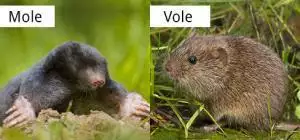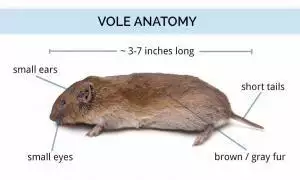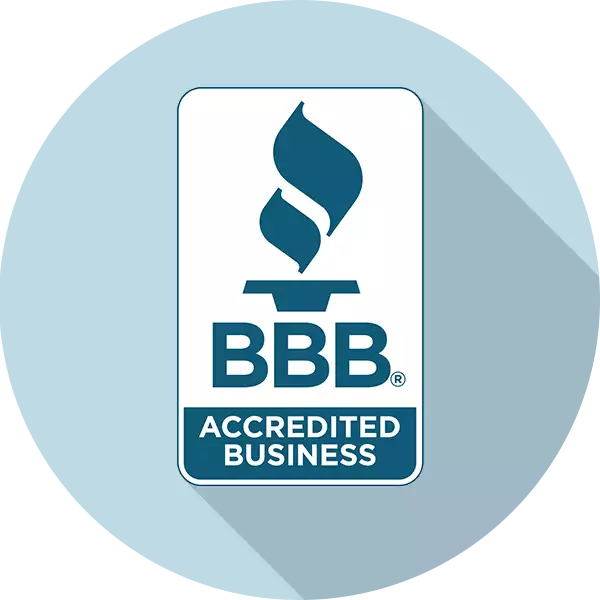HOW TO GET RID OF VOLES
Vole Removal & Exterminating Services
SERVICES PROVIDED BY Virginia Professional Wildlife Removal Services, LLC.

Virginia Professional Wildlife Removal Services, LLC. | Licensed & Insured
Providing Both Residential & Commercial Vole Removal Services for Those Difficult Vole Problems
We Know How To Get Rid Of Voles
(804) 457-2883
How to get rid of voles destroying your yard and plants is an area where our wildlife removal technicians really shine. We are your local experts for getting rid of voles by utilizing our proven state of the art techniques. Let us tailor a plan specific to your particular vole problem. Approach to vole management may include vole trapping, baiting and repellants. Most people consider us the vole and mole experts in Virginia. We know how to safely get rid of voles.
Our service area includes Henrico, Glen Allen, Short Pump, Richmond, Midlothian, Brandermill, Woodlake, Lake Monticello, Albemarle, Amelia, Goochland, Louisa, Fluvanna, Orange, Powhatan, Chesterfield, Mechanicsville, Hanover Counties. Mineral, Gordonsville, and Keswick. If you have voles damaging your yard, killing your plants, or destroying your property or golf course, call Virginia Professional Wildlife Removal Services at (804) 457-2883 and find out how we can help get rid of voles in your yard.
Do I Have Voles Or Moles?
Voles are small rodents that are very common in fields and yards. They are often called field mice, meadow mice, or meadow moles, and create surface runways that help to identify their presence.
Since they do look like other small rodents, such as mice and rats, it’s important to be able to identify voles so you can use the proper method to get rid of them.
Voles are active year-round, day and night. They can sometimes get confused with moles (see vole vs mole image to the left), since some species do create tunnel systems underground. However, they spend a lot of time above ground and they eat plants, not insects, like moles.
Voles create runways in grass, and keep these runways trimmed short, which helps you to find and identify vole presence.
Sometimes, voles will use mole tunnel systems to feed on plant structures underground, but you will find voles above ground much more often.
A vole problem is generally easy to identify. These pesky critters tend to make golf ball size holes in your yard. A lot of time these holes are found in mulch beds.
Voles may cause extensive damage to orchards, ornamentals, and tree plantings due to their girdling of seedlings and mature trees. Girdling damage usually occurs in fall and winter. Field crops (for example, alfalfa, clover, grain, potatoes, and sugar beets) may be damaged or completely destroyed by voles. Voles eat crops and also damage them when they build extensive runway and tunnel systems. These systems interfere with crop irrigation by displacing water and causing levees and checks to wash out. Voles also can ruin lawns, golf courses, and ground covers. Ask us about our premiere vole removal services.
Vole Anatomy
- Voles have certain characteristics that will help you tell them apart from other common small rodents:
- Voles can range in length depending on the species, but can be about 3-7 inches long, and weigh only a few ounces. They are about the size of a mouse.
- They have small ears and very small eyes and short tails; these features help separate them from true mice.
- They can vary in color from brown to gray.
How To Get Rid Of Voles – Vole Extermination Methods
Getting rid of voles can be challenging. There are two main methods for exterminating voles: trapping and baiting. These control methods will help to drastically reduce vole populations, and we can help you use vole traps and vole baits correctly and safely.
Vole Traps
Vole traps are simple snap-traps that offer a successful way to get rid of small to moderate vole populations:
- Fall and winter is a good time to begin trapping, not only because food sources are dwindling, but also because you can help reduce populations before winter, which is when vole damage is at its worst.
- Use mouse-sized snap traps, and make sure you use enough traps. A small area may need about ten, but a large area may need fifty or more.
- Place traps in runways, near possible hiding places, around bushes and flowerbeds or other preferred plants, and near openings of burrows.
- Use apples or peanut butter and oats as bait.
- Make sure traps are perpendicular to the runways.
- Check traps twice a day, in the morning and evening.
- Keep resetting and re-baiting traps until you stop trapping voles.
- Consider covering traps with inverted pans or boxes to protect non-target animals, pets, and children from accidentally triggering traps.
- Handle dead voles with caution; wear rubber gloves and dispose of in plastic bags.
Vole Baits (Toxic)
- THE LABEL IS THE LAW! Toxicants or poison baits MUST be used in accordance with the label and Federal/State/Local laws.
- Some rat and mouse baits will work for voles, but they MUST be approved for voles.
- Baiting in the fall and winter is generally more successful, since food becomes scarce and voles will be more likely to go for baits as a source of food.
- Bait block products placed in an approved tamper-resistant bait station. This way, it is likely that only voles and other rodents will consume the bait. Keeping kids and pets and non-target animals safe should be your number one priority.
- Place bait stations very close to runways, plants that voles favor, and burrow openings.
- Check them daily, replacing bait and keeping bait fresh for at least two weeks.
- If you choose to use bait in a place pack or loose bait, it must be placed underground in vole burrows as specified on the product label.
- Always read labels and warnings carefully, and follow all directions.
- Use caution when disposing of any dead voles on your property, using gloves to avoid contact.
Knowing how to get rid of voles many times requires the expertise of a professional wildlife removal company.
Do Vole Repellents Work?
There are several types of vole repellents available on the market, including natural and chemical options. However, the effectiveness of these repellents may vary depending on the type of repellent, the severity of the vole infestation, and other environmental factors.
Some natural repellents that have been known to work against voles include castor oil, garlic, and predator urine. These natural repellents work by creating an unpleasant scent or taste that voles find unappealing, making them less likely to stay in the area. Occasionally, we hear of people placing wire mesh in vole holes to help prevent a vole infestation.
Chemical repellents, such as those containing capsaicin or thiram, are also available. These repellents work by creating an unpleasant sensation or taste when the vole comes into contact with them. Some people have even tried applying dish soap with a spray bottle to deter voles.
While vole repellents may be effective in deterring voles from your property, they are not a foolproof solution. It is important to take additional measures, such as removing any potential food sources or creating barriers around vulnerable areas, to prevent voles from causing damage to your property.
Do Voles Damage Trees And Shrubs?
Yes, voles can cause damage to trees and shrubs. Voles are small rodents that are active throughout the year and feed on a variety of plants, including the bark, roots, and foliage of trees and shrubs. They are also known to be real garden pest.
Voles can damage trees and shrubs in several ways. They may gnaw on the bark and cambium layer, which can girdle the tree or shrub and prevent the transport of water and nutrients. This can lead to dieback, stunted growth, or even death of the plant. Voles may also eat the roots of trees and shrubs, which can reduce the plant’s ability to take up water and nutrients from the soil.
In addition to damaging the plants themselves, voles can also create runways and burrows in the soil around the base of trees and shrubs. These runways can disturb the soil, expose roots, and create an entry point for other pests and diseases.
If you suspect voles are causing damage to your trees and shrubs, it’s important to take action to control them. This may include trapping, exclusion, or habitat modification. Consult with our professional wildlife removal technician for advice on the best course of action in your specific situation.
Vole Removal – Questions & Answers
Q. What bait do I use to catch voles?
A. You can use a simple, wooden mouse trap baited with a peanut butter-oatmeal mixture or apple slices, although often you won’t need to use bait, because voles will trigger the trap as they pass over it. Trap placement is crucial. Voles seldom stray from their runways, so set traps along these routes.
Q. Do voles bite?
A.Moles do carry rabies, but direct contact with humans is rare. … However, according to the Minnesota Department of Health there is no history of a vole bite causing rabies in a human. You should be especially careful of voles that behave unusually. If you pick one up, it will bite.
Q. How do you repel voles?
A. Use a hose to generously water your lawn or soil after applying castor-oil repellents to ensure its penetration into the ground. Reapply repellents periodically in order to maintain prime repellency and keep voles away long-term.
Q. What is the difference between a vole and a mouse?
A. A vole, also called a meadow mouse, has rounded ears and body and is reddish or brown and black in color with a gray underside. And finally, a shrew has a pointed snout, but unlike the mole, a shrew’s front feet are not enlarged. Also, a shrew’s eyes are tiny, but they are visible in most species.
Q. How do you trap a vole?
A. An effective vole bait is a peanut butter and oatmeal mixture that is placed on the snap trap pan or spread around the edges and top of the snap trap. INSPECTION OF TRAPS. Examine and inspect vole traps every day. Remove dead voles and reset traps.
Q. Where does a vole live?
A. Voles can be found throughout North America in dense grassy fields, gardens, meadows, woodlands, along lakes and rivers and in agricultural areas. Voles make their nests in underground burrows around tree roots, ground cover and beneath fruit trees.
Q. Are voles nocturnal?
A. Voles are active year-round. Some species are nocturnal, some are diurnal, and others are active day and night. Their diet consists of plants and occasionally insects and fungi. Some species in some regions can be agricultural pests.
Q. Are moles poisonous to humans?
A. Moles can bite and they are able to carry rabies, but there is no historical data that suggests any human has ever contracted rabies from a mole bite. And, since moles don’t generally come in contact with humans unless they are handled, it is not likely that you will be bitten by a mole.
Q. Do voles make raised tunnels in your yard?
A. When voles make tunnels while searching for roots to eat, they do not create raised ridges. Voles create golf-ball-sized entry holes into their tunnels along walls and in mulched beds. Their above ground grassy runways connect to multiple, clustered burrow openings.
Q. Do voles live underground?
A. Meadow voles live above ground and pine voles live underground. Voles may be active both day and night. They spend most of their time in tunnel systems one to a few inches below the ground. Voles eat grasses, roots, tubers and other plant material, as well as seeds, fruits, bark and underground fungi.
At Virginia Professional Wildlife Removal Services we are constantly striving to advance our education so that we may serve you better.
Girdling and gnaw marks alone are not necessarily indicative of the presence of voles, since other animals, such as rabbits, may cause similar damage. Vole girdling can be differentiated from girdling by other animals by the non-uniform gnaw marks. They occur at various angles and in irregular patches. Marks are about 1/8 inch (0.3 cm) wide, 3/8 inch (1.0 cm) long, and 1/16 inch (0.2 cm) or more deep. Rabbit gnaw marks are larger and not distinct. Rabbits neatly clip branches with oblique clean cuts. Examine girdling damage and accompanying signs (feces, tracks, and burrow systems) to identify the animal causing the damage.
The most easily identifiable sign of voles is an extensive surface runway system with numerous burrow opening. Runways are 1 to 2 inches (2.5 to 5 cm) in width. Vegetation near well-traveled runways may be clipped close to the ground. Feces and small pieces of vegetation are found in the runways.
The pine vole does not use surface runways. It builds an extensive system of underground tunnels. The surface runways of long-tailed voles are not as extensive as those of most other voles. (Source: Prevention and Control of Wildlife Damage — 1994)
Our Service Areas in Virginia
We provide wildlife removal, wildlife control, animal removal, animal control, animal trapping and pest control services throughout Virginia including the following counties, cities and towns: Afton, Albemarle County, Alexandria, Amelia County, Annandale, Arlington, Ashburn, Ashland, Barboursville, Bellwood, Belmont, Bensley, Bermuda Hundred, Bon Air, Boyd Tavern, Brandermill, Bumpass, Burke, Central VA, Centreville, Chamberlain, Charlottesville, Chesapeake, Chester, Chesterfield County, Colonial Heights, Crozet, Cuckoo, CVille, Dale City, Doswell, Dumbarton, Earlysville, East Highland Park, Enon, Ettrick, Fairfax, Fair Oaks, Ferncliff, Fluvanna County, Fredericksburg, Genito, Glen Allen, Glenora, Goochland County, Gordonsville, Gum Spring, Hadensville, Hampton, Hampton Park, Hanover County, Harrisonburg, Harrogate, Hening, Henrico County, Highland Springs, Hopewell, Innsbrook, Jefferson Davis, Kents Store, Keswick, Lake Anna, Lake Monticello, Lake Ridge, Lakeside, Laurel, Leesburg, Lewiston, Lignum, Locust Grove, Louisa County, Maidens, Manakin, Manakin-Sabot, Manassas, Manchester, McLean, Montrose, Motoaca, Meadowbrook, Mechanicsville, Midlothian, Mineral, Moseley, Newport News, Norfolk, North Courthouse, Northern Virginia, North Garden, NoVA, Oilville, Orange County, Palmyra, Pantops, Petersburg, Portsmouth, Powhatan County, Reams, Reston, Richmond, Richmond County, Robious, Rockville, Rockwood, RVA, Salisbury, Sandston, Sandy Hook, Scottsville, Shannon Hill, Short Pump, South Rockwood, Spring Run, Staunton, Stoney Point, Suffolk, Tidewater, Troy, Tuckahoe, Va, Varina, Virginia, Virginia Beach, Waynesboro, Williamsburg, Winchester, Winterpock, Woodlake, Wyndham, and the surrounding areas of Virginia.
Please Complete Our Simple Contact Form Below:
VPWRS Can Solve Your Problems!
- Need Vole Removal Services In Richmond Or Charlottesville?
- Scratching Noises In Your Attic, Walls, Or Crawlspace?
- Unwanted Animal Wildlife In Your Home, Business or Property?
- Bats In Your Attic?
- Birds In Your Dryer And Bathroom Vents?
- Problem Bird Or Bat Infestation?
- Animals In Your Chimney Or Fireplace?
- Digging In Your Lawn Or Under Your House, Deck Or Garage?
- Dead Animal Problems?
- Animal Odor Problems?
- Chewing Sounds In Your Attic Or Crawl Space?
- Animals Damaging Your Wiring, Insulation, Fascia, Soffits, And The Wood In Your Home?
- Animal Feces Removal?
- Attic Restorations And Clean-Up Needed?
VPWRS Extensive Services
Virginia Professional Wildlife Removal Services provides nuisance wildlife removal, animal control, predator control, pest control, nuisance wildlife exclusion, and wildlife clean-up services.
We have experience handling bats, beavers, birds, Canada geese, chipmunks, coyotes, deer, foxes, groundhogs, mice, moles, raccoons, rats, opossums, otters, skunks, squirrels, snakes, voles, muskrats, bobcats, Copperhead snakes, pigeons, and other species of Virginia wildlife.
We operate our business within accepted industry standards and best practices, and in accordance with local, state, and federal laws.


